Wasps, bees, and butterflies love mountain mint (Pycnanthemum muticum).
Mountain mints are some of the most intriguing perennial flowers for Ohio. They grow in clumps in wide-open meadows and woodland spots. Once used by Native Americans to treat fevers and stomach aches, this perennial is easy to grow. Mountain mint prefers full sun; medium moist, well-drained soil. The vigorous blooms spread through rhizomes, and it’s a native plant (unlike other members of the Mentha genus).
What other Ohio perennials should you know about? Read on to find out!
1. Cardinal Flower
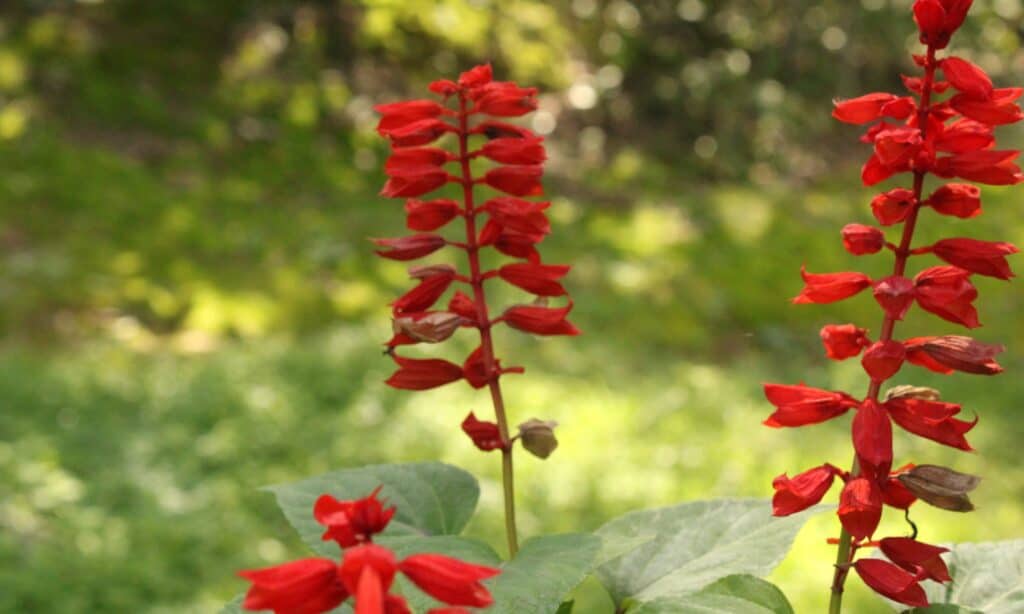
Cardinal flowers are valuable addition to any garden.
©iStock.com/laroy lindsey
The cardinal flower is a species of lobelia that is native to North America. It gets its name from the brilliant red color of its flowers, which are borne on spikes up to three feet tall. The cardinal flower is a popular choice for gardeners looking to add color and interest to their landscape. In addition to its vibrant flowers, the plant also features V-shaped leaves that are dark green in color. Cardinal flowers prefer moist soil and full sun, and they will bloom from late summer into early fall. They are also attractive to hummingbirds and butterflies, making them a valuable addition to any wildlife garden.
2. Obedient Plant
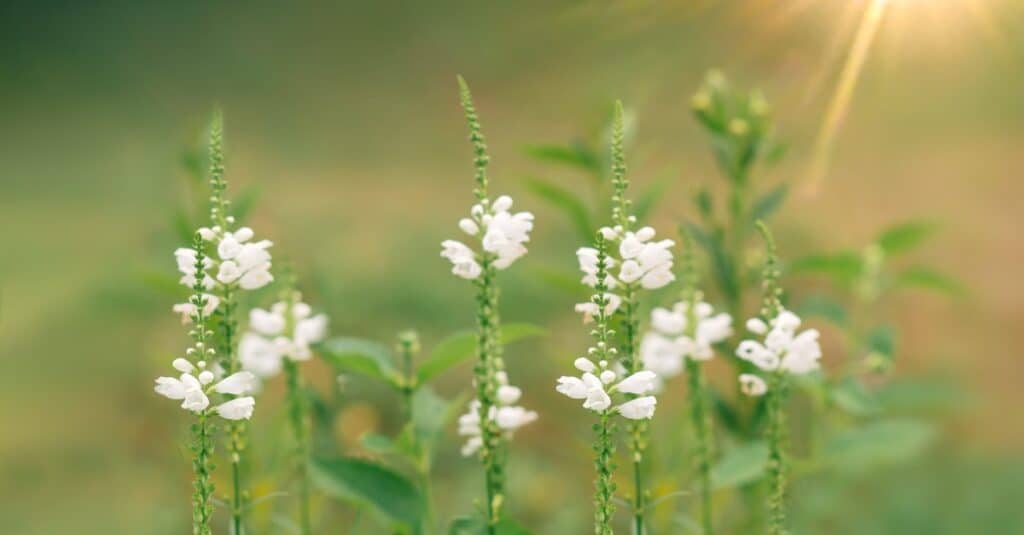
Obedient plants can be quite aggressive.
©iStock.com/OlenaSv
The obedient plant is a member of the mint family that gets its name from its unique flowers. Each flower attaches to a long, thin stem. The lovely blooms make this one of the best perennial flowers for Ohio. The flowers are striking, with pink or white petals and deep purple markings.
Obedient plants are native to North America, where they’re prevalent in woods and prairies. The plants typically bloom from late summer to early fall. While the obedient plant is a beautiful addition to any yard, gardeners should proceed cautiously. The obedient plant can be quite aggressive, spreading rapidly through both seed and root. As a result, it is important to exercise caution when planting this species.
3. Wild Lupine
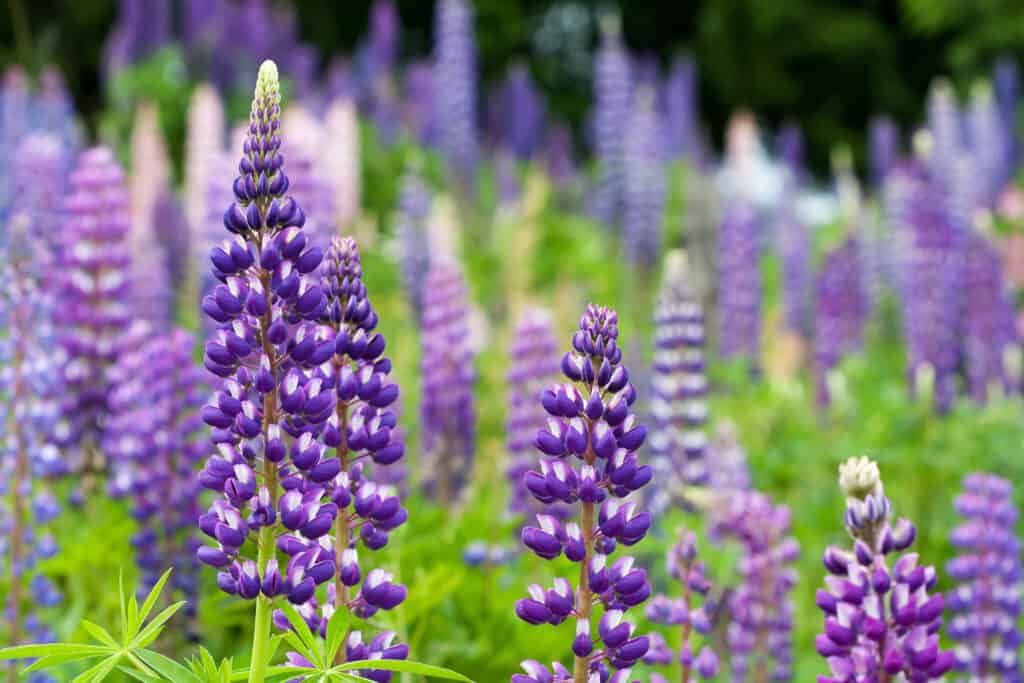
Lupines are sometimes referred to as bluebonnet flowers.
©iStock.com/yuelan
The wild lupine, Lupinus perennis, is a herbaceous perennial that is native to North America. The plant has a rosette of leaves at the base and a flowering stalk that can grow up to three feet tall. The flowers are blue or purple, and they bloom in May and June.
Wild lupine thrives in meadows, prairies, and open woodlands. The plant requires full sun and well-drained soil. It is relatively drought-tolerant, but it will not survive in soggy conditions. Wild lupine is a valuable source of food for pollinators, birds, and small mammals. The seeds are also edible, and they were once an important food source for Native Americans. This is one of the best perennial flowers for Ohio, and it’s also ornamental.
4. Blue False Indigo

The blue false indigo has attractive flowers.
©iStock.com/magicflute002
Blue false indigo, Baptisia australis, is a flowering plant in the legume family. It is native to the eastern United States, commonly found in woods and prairies. The plant gets its name from its blue flowers, which resemble those of true indigo, Indigofera tinctoria.
Blue false indigo is a perennial that grows from a deep taproot. It typically reaches a height of two to four feet, with blue or purple flowers blooming in late spring or early summer. Blue false indigo is a popular choice for gardens and landscapes due to its attractive flowers and hardy nature. That also makes it one of the best perennial flowers for Ohio.
The plant is relatively drought-tolerant and tolerant of poor soils, making it easy to care for. Additionally, false blue indigo provides nectar for bees and other pollinators. Consequently, it can be a valuable addition to any garden or landscape.
5. Swamp Milkweed

The swamp milkseed hosts various insects.
©iStock.com/Cynthia Shirk
Swamp milkweed, Asclepias incarnate, is a perennial wildflower that is native to the wetlands of North America. The plant gets its name from its milky sap, used to make candles and soap. Swamp milkweed is an important food source for Monarch butterflies, as the caterpillars only eat milkweed leaves. The plant is also a host for various other insects, including moths, bees, and wasps. In addition to providing food and shelter for wildlife, swamp milkweed is also known for its beautiful flowers.
The blooms are pink or white and have a sweet fragrance. Swamp milkweed grows best in full sun and moist soil. Hopefully, you get a chance to see these perennial flowers for Ohio in the wild. True to its name, you can find these swamp milkweed in marshes, swamps, and along the edges of ponds and lakes.
6. Columbine
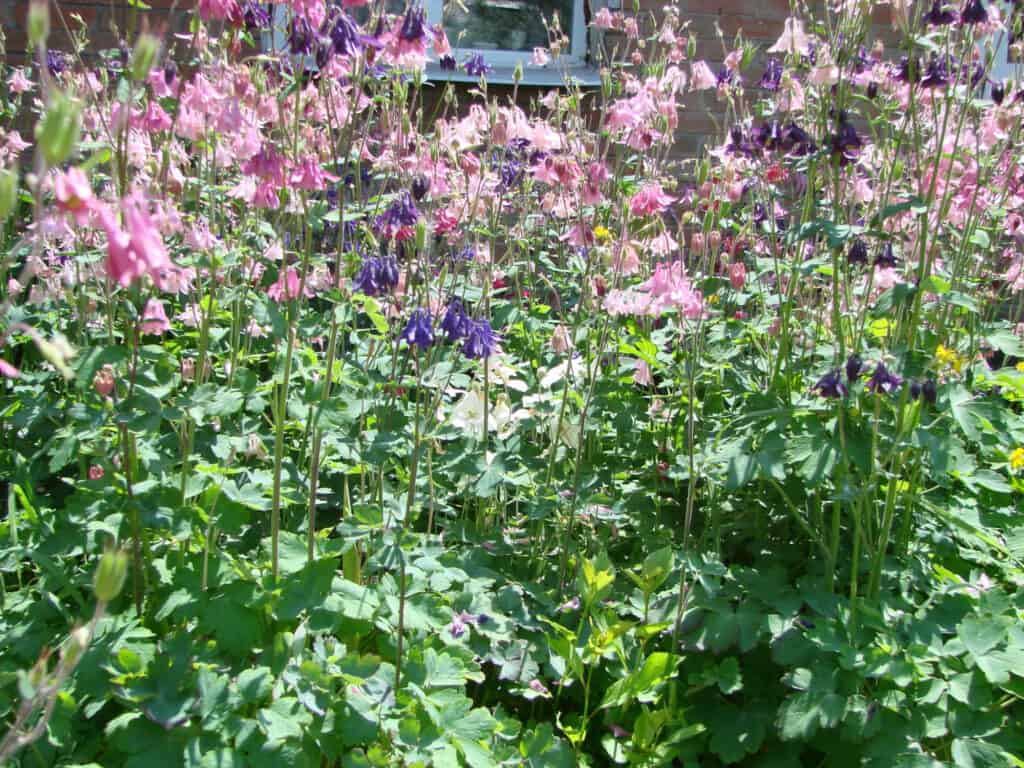
A popular flower, columbine is easy to care for.
©Michiru13/Shutterstock.com
Columbine, Aquilegia canadensis, is a perennial flower that blooms in the spring. It’s one of the best perennial flowers for Ohio for a few reasons. For starters, columbine flowers are distinctive, with long petals that curve back from the center of the flower, like the tail of a comet. The flowers come in a variety of colors, including red, pink, purple, yellow, and blue.
Columbine is a popular flower for gardeners because it is easy to care for and attracts bees and butterflies. The plant grows best in moist, well-drained soil and full sun to partial shade. Columbine will self-seed, so it is best to deadhead the flowers after they bloom to prevent unwanted seedlings. With proper care, columbine will provide months of beautiful blooms year after year. Enjoy!
7. Marsh Marigold
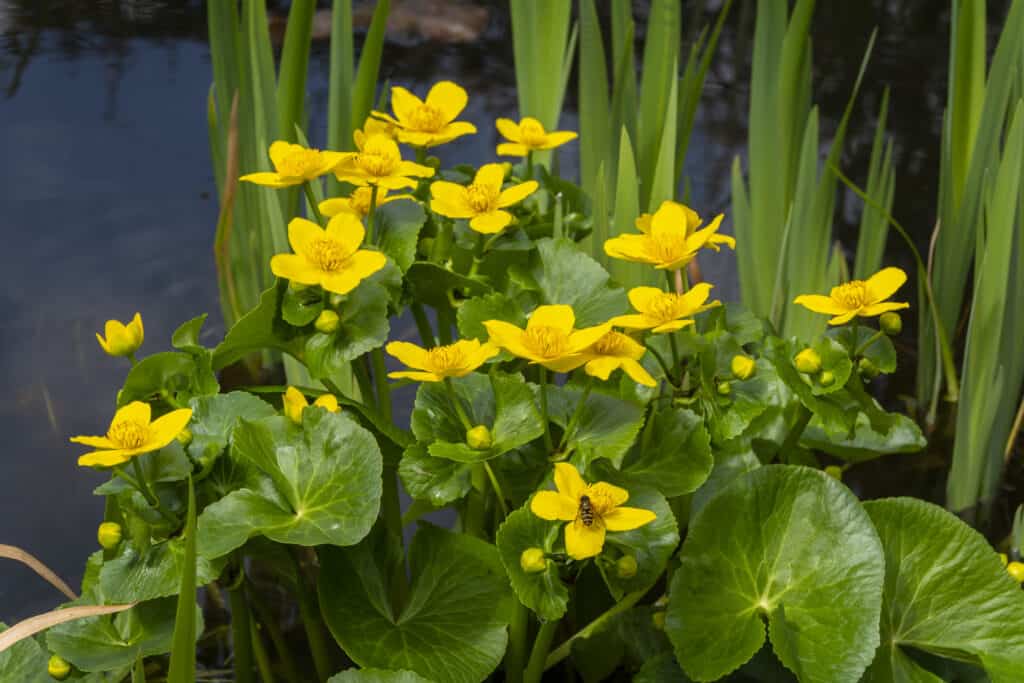
Marsh marigolds are often found in wetlands areas like marshes or along ponds.
©iStock.com/senatorek
The marsh marigold is a beautiful flower that blooms in early spring. It’s one of the hardiest perennial flowers in Ohio. The marsh marigold gets its common name from the fact that it often grows in marshes and wetlands. The plant is native to Europe, Asia, and North America. This perennial is a member of the buttercup family, and it is related to other flowers, such as the pasque flower and the meadow rue.
The marsh marigold is a herbaceous perennial plant that dies back to the ground each winter and grows back each spring. The plant has bright yellow flowers that bloom in early spring. Each flower has five petals, and the plant typically blooms for two to three weeks.
The marsh marigold is a popular choice for gardeners because it’s low maintenance. The plant prefers wet conditions, but it will also grow in moist soil. The best time to plant these perennial flowers in Ohio is in the spring after the last frost has passed. The plant can propagate by seed, division, or cuttings. When planting by seed, it is best to start the seeds indoors six to eight weeks before the last frost date.
Once the seedlings emerge, plant them outside. Division can be done in either spring or fall. To propagate by cuttings, take six-inch stem cuttings in late spring or early summer and root them in moist sand or soil. Get your insecticide ready. This plant is prone to insects, thanks to its attractive ways. There are over 39 species of insects that love marsh marigolds, and not all of them are harmful. Some of the bugs simply want to carry a little pollen for a late-day snack.
Up Next
12 Beautiful Red Flowers in Texas
15 Best Outdoor Perennial Flowers
The photo featured at the top of this post is © iStock.com/magicflute002
Sources
- , Available here: https://blog.herrealtors.com/post/get-in-the-growing-zone-when-to-plant-what-in-ohio
- , Available here: https://bygl.osu.edu/node/589
- , Available here: https://www.mihomes.com/blog/cincinnati/2020/november/a-guide-to-flower-gardening-in-ohio
Thank you for reading! Have some feedback for us? Contact the AZ Animals editorial team.






